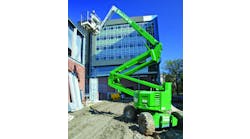One factor is the same reason U.S. manufacturing companies have tended to manufacture in third-world countries in recent decades — to be closer to the customer. Why manufacture a wheel loader in the United States so it can go spend a month on the high seas when your customer in Brazil or India or China needs it immediately? Also manufacturers want to get the customers’ insights into what they need and manufacture it according to the specifications they require. And, at the same time, be closer to the supply chain and support the suppliers in the country where they plan to sell the products.
Also, manufacturers in many industries found it made sense to manufacture abroad less expensively with lower labor costs and then ship product back to sell it in the United States.
So, in a type of reverse logic, for the same reason it made sense to manufacture abroad, manufacturers are now finding it makes sense to manufacturer in the United States. And that labor gap isn’t as wide anymore as wages in, for example, China, have risen, shrinking the gap. The Washington Post recently reported that what was, not long ago, a $17 hourly wage differential between the U.S. and China could shrink to $7 per hour by 2015. With lower inventory and transportation costs, manufacturing here, with higher-quality production and being closer to the U.S. market, why go abroad unless the targeted market is there? And the increase in shale gas drilling in the U.S. provides a cheaper source of energy than one would have thought possible a few years ago.
In another reverse, Chinese manufacturers, for example, are aiming at the North American market. We see it in construction equipment such as LiuGong and Sany. We see it in electronic products too. What type of laptop computer do you use, if you use one? I’m typing right now on a Lenovo, a Chinese-owned manufacturer that is now making laptops in the United States for the U.S. market. We’ve certainly seen this dynamic for years in the automobile industry, with major Japanese manufacturers such as Honda and Toyota setting up factories in the U.S. (construction equipment too.)
In fact, according to some, manufacturing in the United States is becoming less costly. Unions have even allowed wages to fall to remain competitive and save jobs. Workers are increasingly more productive. And according to the Boston Consulting Group, by 2015 it will be cheaper to manufacture in the U.S. than in Europe or Japan. Companies such as Ikea and Airbus are moving manufacturing facilities from Europe to the U.S.
As a new generation comes on the scene, as more graduate from university armed with new ideas and MBAs, a new wave of entrepreneurship and start-ups may be upon us. The era of huge manufacturing plants that employ almost entire towns is not likely to return but studies have shown an era of smaller start-up manufacturing may be on the horizon. That could mean more jobs, more trade, more economic activity and more activity in the equipment rental business.
@ @ @
Speaking of entrepreneurship, make sure you take a look at the cover story this month and read about a young guy who has made it a way of life in the rental business. I like the way Ashley Pouche, owner of Platte Rental & Supply, keeps his ear to the ground. He started the business in the year 2000, believing Parkville, Mo., and Platte County, the county Parkville is in, was going to be a growing area, and it has, with Parkville’s population growing 37 percent and Platte County growing 21 percent. Obviously that would mean widening highways, new supermarkets, new housing developments and lots of opportunities for a rental business. I also like the way he bought into the scaffolding business when the opportunity arose and has made it work successfully.
In addition to a commitment to hard work, Pouche also makes sure he keeps in close communication with his customers so he’ll be in tune with their needs as new work and projects come along. He does it the old-fashioned way and the modern way, standing at the counter and talking to them when they come in and visiting them on jobsites as well as using social media to expand the public’s awareness of the business and communicate his company’s capabilities and services.





